The birth of the Soviet missile defense system. Adventures of S-300
Our old friend Malinovsky, as usual, is categorical in describing Soviet computers:
As for the genius and progressiveness of Lebedev's ideas, I think everything is clear from the previous articles, he was definitely an intelligent person and a first-class electrical engineer, as well as an excellent organizer and charismatic politician and leader.
He, of course, sincerely wanted to promote the architecture of computers and made efforts to this, it is not his fault that there is little effort here, specific knowledge and techniques are needed that he did not possess (yes, in general, none of the Soviet school of designers possessed them. ).
As a result, his work was not bad machines by the standards of 1950-1960, but then Lebedev reached the limit of his competence. Melnikov tried to follow the mainstream of his teacher's thoughts, but Burtsev, on the contrary, became a kind of heretic.
Burtsev
Vsevolod Sergeevich was born in 1927 and suffered numerous hardships. School ended for him in the fifth grade, because:
This is how Burtsev himself recalled in one of the rare interviews, which he had no right to give before the collapse of the USSR (he even went to international conferences on special permission of the Politburo with a constant tail of agents and never made reports), and after the collapse he simply did not like.
MEI in those years was an inexhaustible source of personnel for Rameev, Lebedev and Brook.
Burtsev designed a BESM control device for Lebedev (as we said, all Lebedev BESMs of Lebedev's proper had one idea and a couple of circuitry tricks, everything else was independently finished by his students to the best of their talents). Long investigations made it possible, by the way, to discover the source of the myth about what Lebedev spoke about the reliability and unreliability of the BESM.
According to T. V. Burtseva, expressed in the article "Vsevolod Burtsev and supercomputers" (Open systems. DBMS, No. 09/2007), Lebedev expressed himself this way in general in relation to ... "Strela"!
An alternative version is also mentioned, who exactly spoke out that with the help of a computer all the country's problems will be solved in a couple of months.
Of course, it is no longer possible to establish the truth, and it is not even necessary, it is just a good demonstration of those wild and crazy times when a computer in the USSR was considered something like a synchrophasotron, an expensive, complex, unreliable and limitedly useful toy for academicians.
In the United States and Britain, there was also a second estate, businessmen, they turned on all their talents to convince people that they need something that people themselves do not yet suspect, and in 10 years they created a billion-dollar industry with thousands of computers. In the Union, alas, this attitude towards cars remained until the EU series.
In 1953, Burtsev was transferred to NII-17 to develop a station for digitizing radar data, which predetermined his future fate, for the next 30 years he created systems for air defense and missile defense.
An interesting one is also connected with the translation itself. story, which we have already quoted, about Lyapunov and the magnetic drum. After the completion of the BESM, Burtsev became one of its main operators, responsible for the operation of the machine.
He recalled (we will repeat the quote so that readers do not look for it):
Once we started to work, having received some kind of, as Lyapunov said, an ingenious result.
- And what to do next with this brilliant result? “He’s in RAM,” I ask Lyapunov.
- Well, let's put it on the drum.
- Which drum? He is the KGB sealed!
To which Lyapunov replied:
- My result is a hundred times more important than anything written and sealed there!
... I recorded his result on a drum, erasing a large pool of information recorded by atomic scientists ...
The most interesting was the continuation of this story.
The result was successfully recorded, and, naturally, the KGB officers would not even have realized that something had happened, but that very night the magnetic drum deigned to die, which happened to the BESM components a couple of times per shift. Burtsev took pity on Lyapunov and went to fix it, the result of the calculations was saved, but the seal, of course, was broken.
The next morning there was a terrible scandal, Burtsev almost left for the Kolyma, the entire shift was disbanded and fired, he was deprived of all permits and rights and was expelled from ITMiVT.
As a result, Melnikov remained there - to reign and collect BESM-2 and BESM-6, while Lebedev saved Burtsev from reprisals by placing him in NII-17. It was very lucky that this story happened already in the peaceful times of Khrushchev, otherwise one designer in the Union would become less, and more an enemy of the people.
"Diana"
The result of work at NII-17 was two machines "Diana-1" and "Diana-2" that appeared in 1956. By the way, notice how differently the word "appeared" is to be understood. If you just read the chronicle in parallel, you get an eye-catching parity - the USA has all sorts of IBM 701, 702, 704, etc., in the USSR all sorts of BESM, series "M", "Diana" and so on appeared in the USSR.
But in America, this word meant the creation of a commercial series of thousands of cars, and here we literally appear in a single copy, occasionally up to a dozen.
Therefore, if you look at the nomenclature, then yes, the USSR was heroically on a par with America. If in terms of the number and types of cars, it was already two orders of magnitude behind by 1955.
"Diana" Burtsev also remained unique.
In 1956, the complex was successfully tested with the P-30 radar, "Diana-1" digitized data from the radar and performed target selection, "Diana-2" calculated the interception and gave coordinates to the fighter. For his work, Burtsev immediately became a doctor of sciences from no one (in 1962, in general, in those years it was so accepted, half of the employees of SKB-245 became candidates and doctors, not even having a university diploma).
Note that from the modern point of view, "Diana" were not full-fledged computers at all, they were, in fact, digital set-top boxes for the radar. They had a unicast system of 14 instructions of 10-bit numbers with 256 instructions RAM and a fixed memory of constants. It was impossible to use them as general-purpose vehicles, although this was not required of them.
From article to article the myth that "Diana" was the first computers of this kind and in general, they say, America caught up with the USSR only in the mid-1960s (before that, apparently, their planes flew blindly over the country).
In fact, catching up, as always, with the USSR, the Diana project began as a response to the Whirlwind I air defense computer, launched in 1951 at the MIT Lincoln Laboratory.
Unlike the Dian, the Whirlwind was a powerful versatile vehicle used to deploy the Cape Cod System, an all-American air defense test system (SAGE prototype). Assembled on 5 lamps, the computer was the most advanced in the world at that time, it even had the first graphic display on which the system operator could mark targets of interest with a light pen.
In 1952, the project was recognized as a success, and IBM received a contract for the construction of a series of Whirlwind II machines (the final name of the IBM AN / FSQ-7), on which the world's first fully-fledged automatic air defense system of the country level - SAGE was assembled.
In addition to the colossal innovations of the system itself, the prototype also left a trace in history.
Whirlwind I was the most powerful computer of the 1950s, producing about 35 KIPS (albeit using only 16-bit integer operations), the first in the world equipped with ferrite memory (in fact, it was created for him) and had a unique architectural innovation of those times - common bus.
Nowadays it sounds like an unimaginable savagery that the system architecture of a computer can be built differently, but in the 1950s there was no concept of how to rationally connect blocks inside a computer. We have already talked about displays.
One of Whirlwind's fathers, Kenneth Harry Olsen, helped create the TX-1956 transistor version (the first 0% transistor in the world) in 1959 and founded the famous Digital Equipment Corporation in 1, which released the DEC PDP-360 ( PDP minicomputers, along with the S / 90 and the IBM PC, make up the three most influential computer architectures in history, XNUMX% of the entire IT world today is based on their legacy).
The Whirlwind I itself already in 1951 was able to solve the tasks of target tracking with data from 3 radars (and not one like Diana) and using 14 radars (similarly), and the pointing accuracy was less than 1000 m. By 1953, Cape Cod System could track up to 48 targets online.
So, a bike about the fact that in 1955 "Diana"
alas, it will remain a fable, despite the fact that the aged Burtsev himself, it seems, sincerely believed in it.
In any case, when Kisunko needed computers for exactly the same, but greater productivity, in order to track not an airplane, but a rocket, he came to Burtsev.
M-40 and M-50
As soon as the Diana project was completed, in the same 1956, the development of the M-40, the original architecture, especially for the missile defense test site, began. It worked with fixed point numbers, had the latest 4 word ferrite memory and was overclocked to 096 KIPS. The M-40 was completed thanks to the rush, even before Lebedev completed the twice slower M-40.
In the M-40, Burtsev used the then fashionable partial conveyor - a combination of arithmetic operations with sampling and even a multiplex channel, a technology that he, unlike his teacher, highly respected. It was assembled from everything that was found: a processor based on lamps and ferrite-diode elements in the spirit of BESM, numerous interface equipment - ferrite-transistor (the predecessor of the BESM-6 technology).
In 1958, the M-40 was completed, and a year later its sister, the M-50, appeared with real arithmetic and a little more (as its name implies) power. Both cars also remained in a single copy. They were delivered to the landfill in 1959, adjustments and tests were carried out until 1960, then test launches went. In this case, the M-40 actually played the role of a channel processor for the M-50.
As we have already said, in 1961, this time really the first in the world and ahead of the United States, we successfully launched an anti-missile, which hit an ICBM warhead with a non-nuclear charge. After that, preparations began for the development of the A-35 serial missile defense system, and the three fates - Burtsev, Kartsev and Yuditskiy intertwined into one. Only Burtsev was lucky.
We have already written about the adventures during this launch, here is how B.A.
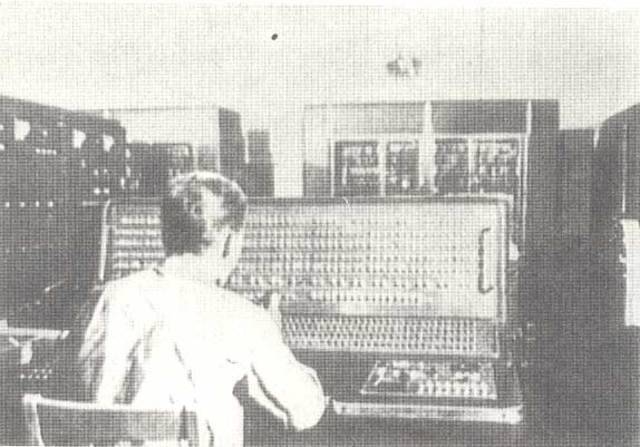
The saga with the competition for a car for the A-35 system is already known to us.
5E92b
By this time, both Yuditsky and Kartsev had created their computers for radar - for the K-340A missile defense and for the M-4 air defense, and on their basis, the 5E53 and M-9 computers were offered, respectively.
As we already remember, 5E53 wins the competition and goes into mass production, but then ... all work on the ISSK complex is stopped, production of 5E53 is canceled, and the A-35 missile defense system is adopted, for which Burtsev urgently needs to prepare a computer.
He does not bother for long, because back in 1961 he created 5E92 - a serial version of the M-50, designed to work in a single-machine version, without a partner M-40. Without thinking twice, its element base was transferred to transistors - this is how the 5E92b appeared, the prototype of all domestic air defense computers until the end of the 1990s.
The 5E92b was created in 1964, tested in 1967, a full-fledged channel processor became a feature of the architecture, therefore, in many sources it is called a dual-processor. Due to the channels, the machine had developed means of communication, which made it possible to connect up to 12 computers in a complex with shared RAM.
The theoretical performance was 500 KIPS (sometimes 37 KIPS of the channel processor is separately indicated). The commands were 48-bit, 32 kilowords of RAM, and the machine had 4 magnetic drums with 16 kilowords.
In general, the technology of hard drives was unknown to the USSR until the mid-1970s, and the monstrous drums developed by ITMiVT were in all their machines by default, even this monster was initially crammed into Elbrus!
The machine worked with 28 telephone and 24 telegraph duplex channels.
In general, its architecture was quite interesting, but there is nothing surprising even at the level of the USSR.
As usual, it is argued that the connection of machines by telegraph channels had no analogues in the world, and in the USA this appeared almost along with the Internet, only those who claim are not aware that back in 1959, during the construction of the first NASA MCC, IBM used three computers. connected by a network: in Washington, Florida and Bermuda, not to mention the fact that this idea was first practiced back in the early 1950s with the creation of the SAGE prototype.
The complete complex was built on 12 computers 5E92b, two of them were in a state of hot standby. Six machines processed data from the radar and identified targets, the remaining 4 - solved the problem of targeting and distributing targets to rifle complexes.
In fact, 5E92b remained prototypes, in the same 1967 their improved already serial version 5E51 was released, the performance of which was doubled, to the level of BESM-6, squeezing out about 1 MIPS. These machines were required three times less - only 4 pieces.
One of these complexes was installed at the Outer Space Control Center, whose tasks were to maintain a catalog of space objects in near-earth orbit. In addition, it was used for its intended purpose, putting it on the A-35 missile defense system, however, its power was not enough to implement all of Kisunko's concepts.
Another widespread myth (mentioned even in the Russian "Wiki") is the alleged Western recognition of the 5E92b as "highly reliable, the first special semiconductor computer and the first military computer with a multiprocessor structure", made by a certain professor Trozhmann in the book Computing in Russia - The History of Computer Devices and Information Technology revealed.
In fact, the aforementioned Georg Trogemann is a professor at an unknown private School of Arts and Cinema (!), Founded in 1990 in Cologne (Germany), and the book was published by translating some Russian articles into English, carried out as part of an art project on computing. technique "Arifmometr" (it is in this spelling, not the German "Arithmometеr").
With such a level of experts, it is amazing how this machine did not even become the first mainframe in the world. In the best traditions of domestic developments, the 5E92b / 5E51 instruction system was extremely interesting - 48-bit data (with 3 bits parity) and 35-bit two-address instructions. The area occupied by the complex is also impressive - over 100 sq. m.
The machines of this series worked until 1980, when the first Elbrus appeared, but managed to give an interesting lateral offspring.
In 1969, the development of the famous S-300 complex began. Since it was conceived from the very beginning as a mobile, and to carry a computer with you is 100 sq. m - it was too cool even for the USSR, Burtsev received an order to assemble a car that could be pushed into a large truck. Naturally, a transition to integrated circuits was required.
Back in 1965, Burtsev's colleague Igor Konstantinovich Khailov became interested in the idea of mobile computers and developed a 5E65 portable computer project.
The machine had a variable word length of 12/24/48 bits (finally, though not 8/16/32, but at least the second most popular world standard of those years) and a stack addressless architecture, which was unrealistically cool for the USSR at that time ...
On its basis, a transportable multi-machine complex 5E67 was developed, which was even used for a variety of meteorological observations.
The car was housed in a trailer, 5E65 had a capacity of 200 KIPS with an MTBF of 100 hours. Option 5E67 already had a performance of 600 KIPS and an MTBF of 1000 hours.
Their release was suspended after the signing and entry into force of the SALT-1 Strategic Arms Limitation Treaty.
The decision to create the Burtsevskaya 5E26 for the S-300, partly based on this machine, was made as much at the level of the Central Committee of the CPSU, and ITMiVT was appointed the responsible organization directly by its decree, and Lebedev, naturally, was appointed general (in general, it is funny and characteristic that he did not build with Until his death, the BESM-2 was automatically considered the designer of everything that came out of the walls of the ITMiVT until his death, and he received an award for each car).
5E26
In the case of 5E26, everything was even more interesting.
Naturally, Lebedev was in charge, the second was his scientific "son" - Burtsev, and the real work was done rather by his "grandson" - E.A. Krivosheev, or more precisely, his subordinates.
In total, the real creators of the machine are separated from the nominal ones by as many as 4 steps, as was customary in the Union (for example, the real creator of recursive computers, Torgashev, was also fourth in all reports on this architecture - after Academician Glushkov and his two university bosses: the rector and the dean).
When the 5E26 was being developed, Lebedev was already seriously ill, and all his contribution to the work was reduced to signing papers. To Burtsev's share
Krivosheev was entrusted with the solution of technical and engineering design issues and leadership of the development team and seconded personnel of related organizations,
- according to memoirs from an article by L.E. Karpov and V.B. Karpova “Computing tools for anti-missile and anti-aircraft defense systems of the country. The role of S.A. Lebedev and V.S. Burtsev ".
As a result, the car was created
The machine has already been designed using one of the first domestic CAD systems, and not on a piece of paper, the process took about three years, and only about six years.
By 1976, after the death of Lebedev, the first tests of the factory machine were finally passed, and in 1978 serial production was launched - hello again, six to ten years from idea to implementation.
The trouble with the USSR was also in the fact that as the complexity increased, the development time grew. For tube machines it was normal to slow down for a couple of years, for transistor machines - 3-4 years, for machines based on GIS or IS, lags of 5-10 years became the norm.
This was partly to blame for cave design technologies - by the 1970s it became extremely difficult to assemble a car with a pencil and paper, and amazing memories remained about working with CAD on 5E26 (quoted in "Evgeny Aleksandrovich Krivosheev: biographical sketch of the creator of a computer for the C300 anti-missile system"):
We will simply keep silent about what design systems we were working with in the United States at that time.
The second problem was the monstrous quality of Soviet components, which dropped exponentially as their complexity increased. This is one of the reasons why many considered BESM-6 to be the standard of reliability. The secret was not at all in the genius of Lebedev, it was just a little more difficult to screw up the transistor than an integrated or hybrid circuit (although at the beginning of the USSR he coped with this).
In general, it was not by chance that Soviet transistor machines found such popular love - a kind of Zen was achieved in them. Lamps were unreliable because of their primitiveness, microcircuits because of their high complexity for the USSR. The transistor hit just the golden mean.
Unfortunately, physically assembling a computer for the S-300 on transistors would not have worked out - 5 trucks with equipment, instead of one, the USSR would, of course, have endured (and did not tolerate such an archaic), but in terms of speed, the transistors were not exported in any way.
I had to, swearing, work with the IS 133 series, and it was just a shadow of hell that awaited in the future, while developing Elbrus.
As a result, the 5E26 development timeframe was disrupted, it was necessary to supply a crude complex for military trials, under guarantees of troubleshooting. By the way, threefold redundancy, as the most direct way to increase reliability, appeared in 5E26 not from a good life.

As a result, the triple set of equipment was still able to be pushed into a volume that fits into a hefty MAZ-543.
The computer produced about 1,5 MIPS (according to other sources - no more than 0,9-1 MIPS, in general, the performance of 5E26 is a great mystery, because, according to the recollections of the same people, its next more progressive version, 40U6, had a performance of ... two times less), had an ALU with a fixed point, a 36-bit (4 bits - control) word, 32 kbit RAM, 64 kbit command memory on biaxes, but it was still fantastically unreliable, in fact a beta version went to the troops.
The S-300 was finally put into service in 1979, 11 years after the decision to develop the complex, and most of the brakes happened due to the most complex and most important link - the central on-board computer.
In parallel with the development of the complex for the S-300, Burtsev is already ordered a normal (and not like a BESM-6) supercomputer, which can be used both for missile defense and as a general-purpose machine for the most advanced scientific centers (however, as a result, as a scientific supercomputer project did not take off).
Elbrus-1
Elbrus-1 development takes ten long years - from 1970 to 1980, and at the same time R&D at Elbrus-2 is opened (as a result, they come out with a difference of only 4 years, and the second version is much more famous, leaving its predecessor in the shadows ).
The pre-project BESM-10 - Melnikova and Korolev, M-13 - Kartseva and "Elbrus-1" - Burtseva claim the role of the upcoming supercomputer.
In 1974 Lebedev dies and the BESM-10 is rejected (especially since its architecture and circuitry were simply monstrous), Kartsev is allowed to build the M-13, but the project is hindered with all their might so that, unable to withstand the stress, he dies. Melnikov went to build his magnum opus - to clone the Cray-1, but to no avail, the "Electronics SS BIS" never went into production.
As a result, we have only one Elbrus left.
During the design process, ITMiVT faces numerous problems - two projects of such complexity: a supercomputer and 5E26 are extremely difficult to run, although their element base is the same.
Added to this is the fact that the numerous jambs in 5E26 cannot be corrected, as is usually customary, by the forces of the plant - too complicated equipment. Krivosheev struggles with the team, torn between laboratory, test site and production.
Krivosheev received a full set of awards - from the title of Doctor of Science to the State Prize, and then a miniature version of the game "saw a neighbor's money" began, which the Soviet research institutes adored to play, only at the level of one ITMiVT (in general, after the death of Lebedev, who kept everyone in check, Against the background of the general stagnation of the 1970s, showdowns began at the head institute of Soviet computer engineering - they had already won all the others, it remained to fight with themselves).
Interest in the 5E26 returned in the early eighties, when the modernization of the S-300 system began. The customers of the system, accustomed to seeing the institute “at hand” in all critical situations, insisted on the modernization of 5E26. A unique moment has come for the real continuation of the work, be it the desire of the institute and the understanding of the importance of the leadership of this particular topic for the future of the institute. In the laboratory, literally in a month, a technical project was worked out, which assumed the first-priority solution of long-overdue problems. By simply replacing the ferrite memory with a semiconductor one and power supplies for pulsed volume, the weight and power consumption of the CVC were halved. Improvements to the processor increased its performance and got rid of associative memory. All this made it possible to guarantee a two-fold increase in performance and memory, reduced to the allocated amount of space. And only the next stage, it was proposed to change the architecture of the processor, providing at least a twofold increase in its performance. The implementation of the project, using only the mastered element base, would make it possible to obtain a CVC with characteristics that meet the needs of both the current and subsequent modernization of the S-300 system. One can only guess what the chief designer of TsVK 5E26 V.S. Burtsev, rejecting this option. Perhaps the fact that he was completely occupied by Elbrus, he did not have the strength and ability to deal with this project, and the vector processor, whose performance was an order of magnitude higher than that of the Elbrus processor, was at that moment much more important for him than his future the brainchild to which he once gave so much strength?
The modernization was reduced to the manufacture of TsVK 5E265 according to the reissued documentation in the construct developed by the plant. Nowhere mentioned now, as if it did not exist, 5E265, easily passed factory and state tests. Since 1983, it went into series and until the collapse of the Union, it was produced by two factories.
In the total number of 5E26 products, most of them - 1 pieces - are precisely these CVCs. At the same time, a decree was issued on the development of TsVK 500U40 with parameters close to the previously rejected version of the 6E5 modernization, and unclear deadlines due to the unavailability of the structure and element base. The chief designer of this product was E.A. Krivosheev.
In 1984, immediately after the adoption of the Elbrus-2 into the series, a riot occurred on the Lebedev ship.
ITMiVT, as we have already said, devoured itself in the absence of competitors, Ryabov and Babayan deposed their director Burtsev, the darkest history of Soviet computer engineering of the 1980s began - the mythical Elbrus-3, but more on that later.
Despite all the merits, Burtsev survived on an ordinary job in the Computing Center for Collective Use of the Academy of Sciences of the USSR, his further fate will also be discussed below.
Eighties
In general, talking about the times of the 1980s is hard enough. The USSR was already inevitably flying towards collapse, and many at the top understood this perfectly. Simple and sincere party fools and power-hungry 1960-1970s, who made the wrong decisions due to ordinary oak ignorance or their pride, in the 1980s gradually began to be ousted by people who understood perfectly well that it was necessary to forge the iron while it was hot. Another 5-6 years, and then, as in an old joke, the emir will die, and there will be no one to ask them, and it is not known whether there will be a second such chance to earn.
As a result, since 1984, the main developer of the S-300 on-board computer, both nominally and in fact, became Krivosheev alone, who, in the face of competition for finances, tried to continue work on 3U40 with Babayan's group and Elbrus-6.
It turned out so-so.
As a result, it was necessary to plug in a fivefold redundancy, add a software control system for the equipment and permanent memory on EEPROM, the production of which had at least been mastered by Mikron and Integral by that time.
CVC S-300 is often called reconfigurable or even dynamically reconfigurable, however, this is a fundamental error in terminology. From the point of view of the system architecture, reconfigurable machines are those that do not have program control, when the computer itself is adjusted to the task by changing the structural blocks. Reconfigurable (not programmable!) Was, contrary to the opinion of the majority, ENIAC (but SSEC was just a static machine, controlled by a program).
Currently, the most well-known technology is FPGA, which allows, roughly speaking, to fit the chip to the task. 40U6, on the other hand, was the most common machine with the most common software control, its "reconfigurability" was that the operating system monitored the state of the complex and promptly took out of use incorrectly operated nodes, connecting the same backup ones instead.
This architecture first emerged in the West in 1976 when the startup Tandem Computers, Inc. introduced the fault-tolerant Tandem / 16 NonStop server. Tandem machines shocked the visitors of all computer exhibitions by the fact that they were asked to pull out several cards of any kind from the working mainframe - after which NonStop continued to work, as if nothing had happened!
In 1996 Tandem patents for fault-tolerant architectures were bought by Compaq, and in 2001 Compaq merged with Hewlett Packard, the NonStop line moved to Itanium and formed the basis of the most powerful HP servers - Superdome.
Despite the non-originality of the idea, the 40U6 turned out to be a generally good machine by the standards of the USSR, the processor on antediluvian discrete ICs was overclocked to 3 MHz, hardware support for the most common elementary functions was added to the system.
The performance was 0,75 MIPS, but it was obvious that by this time the Soviet computer industry was a corpse, driven on parole and stubborn refusal to acknowledge its condition.
The stunted Intel 8080A processor produced 0,435 MIPS / 3 MHz back in 1976, the MOS Technology 6502 from the first Apple - 0,43 MIPS / 1 MHz in 1977, as did the Motorola 6802 - 0,5 MIPS / 1 MHz.
In the 1980s, one could only laugh at such a capacity in a truck the size of a sea container: Intel 8088 0,75 MIPS / 10 MHz (1979), Motorola 68000 (processor ... kghm, Sega Genesis attachments) 1,4 MIPS / 8 MHz (the same 1979) and finally the mighty Intel 286 1,28 MIPS / 12 MHz (1982).
In fact, one could buy five Sega consoles from the Japanese and assemble the same thing with five times the reservation.
Naturally, we can emphasize that 40U6 had a unique instruction system that would be expensive (in terms of performance) to emulate on a conventional processor, but, sorry - in those years there was a heyday of custom chips, ALUs of all stripes and bit- slice of special-purpose architectures, created just for the implementation of any command systems that the customer's heart desires. At the same time, unlike any civilian 286s, the power of custom chips and boards was measured in dozens of MIPS.
In the West, the 1980s were the golden era of the heyday of all kinds of architectures - thousands of chips were released for every taste and wallet, from transputers to digital signal processors. Fencing a carriage on wheels in the era of solutions based on 5-10 crystals - this was already a diagnosis for a domestic computer program.
In 1988, another round of production hell ended and 40U6 was adopted.
In total, about 200 kits were made, which were used in various modifications of the S-300 until the 2000s.
At present, they have been replaced by Elbrus-90 Micro, but this is a completely different story.
For modern treasure hunters, estimates of the cost of materials used in such pulp and paper mills, posted on the website of one of the bloggers, possibly who once served on the S-300P, may be interesting. The microcircuits and connectors contained approximately 3 kg of gold and 20 kg of silver.
The work of ITMiVT after 1985 is well described by a colleague of Krivosheeva, Ph.D. Sofronov in an interview with "Evgeny Aleksandrovich Krivosheev: a biographical sketch of the creator of a computer for the S300 anti-missile system":
On this gloomy note, the former head of the ITM and VT department Pavel Dmitrievich Sofronov finished in 2011 his memories of Evgeny Aleksandrovich Krivosheev and the remarkable achievements of his team. Continuing his memoirs, I cannot but paraphrase the well-known phrase of V.I. Lenin that "communism is Soviet power plus the electrification of the entire country."
The slogan "Soviet power plus Elbrusization of the whole country" also turned out to be far from reality. The series of the first "Elbrus" did not become as successful as the 5E265 - 40U6, a kind of Kalashnikov assault rifles in the field of computers, mainly due to the fact that the transfer of many functions of the system software to the hardware did not correspond to the then level of reliability of the domestic element base. The Americans, including the Burroughs company, at one time in the 1970s abandoned the development of a line of computers with a stack architecture and an increased level of internal language, and only then the management of ITMiVT continued and developed this line.
In the next part, we will begin to analyze the epic with "Elbrus", in which there are so many dark spots that even the history of BESM-6 will seem simple, understandable and comfortable.
- Alexey Eremenko
- https://www.timetoast.com, https://simhq.com, http://tcm.computerhistory.org, https://history-computer.com, https://computerhistory.org, https://www.ll.mit.edu, https://en.wikipedia.org, https://ifdesign.com, https://www.retrodomination.com, https://classicalgaming.files.wordpress.com
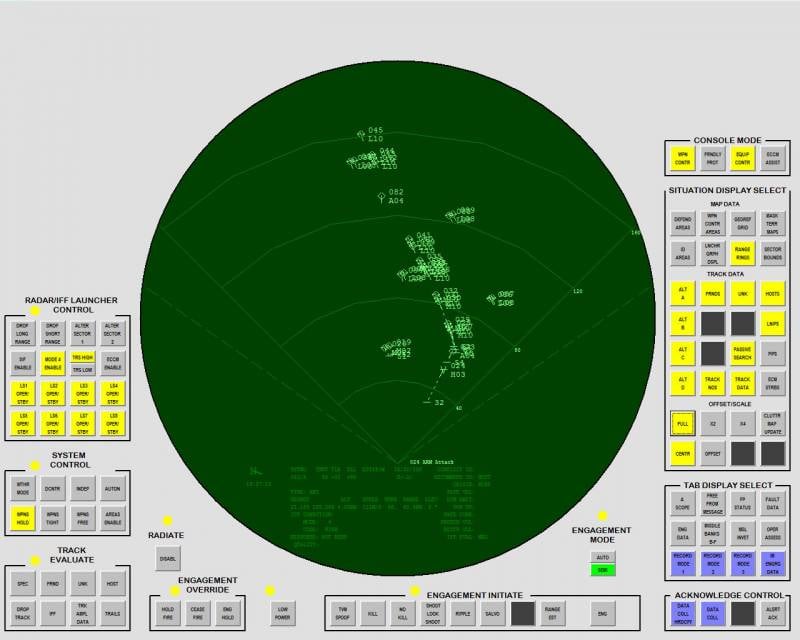
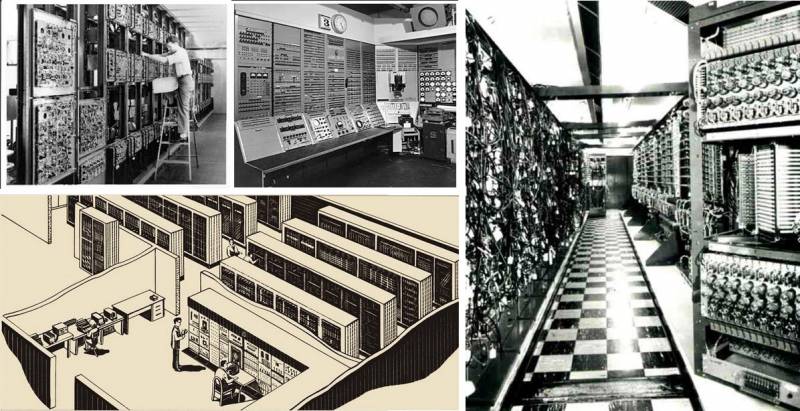
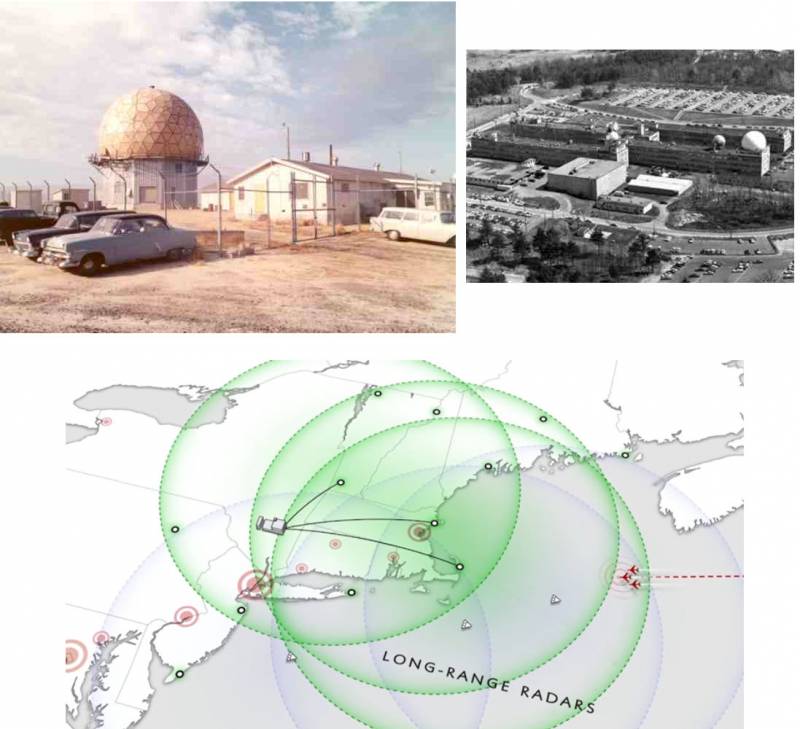

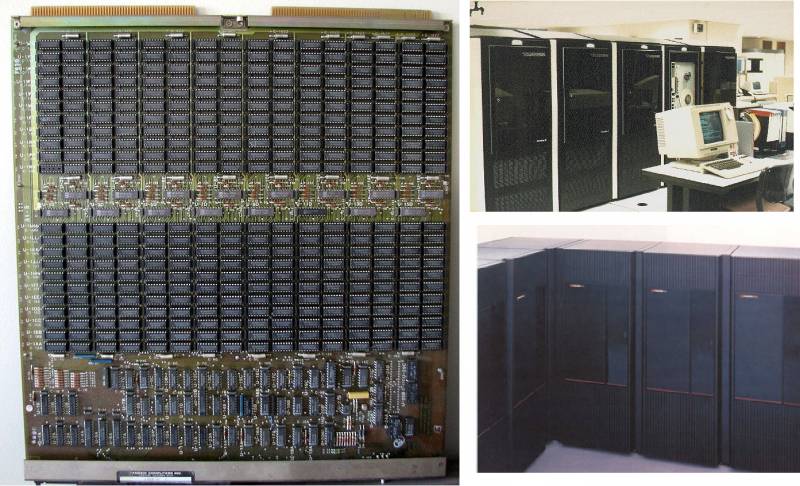
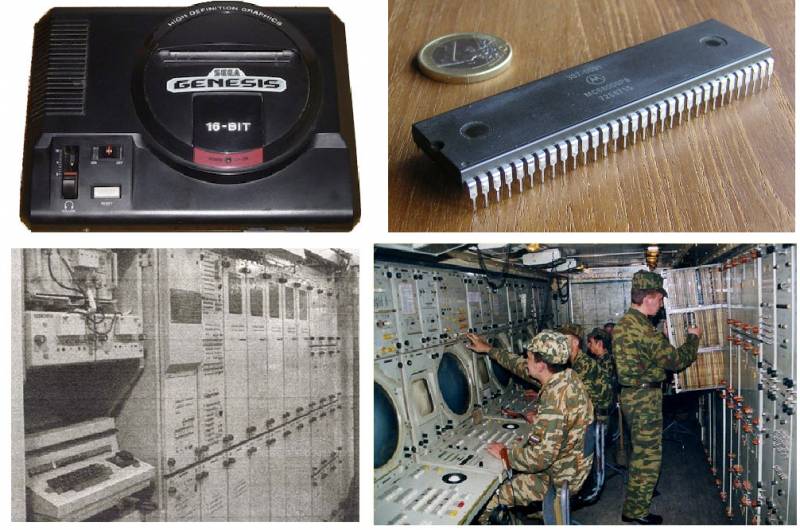
Information